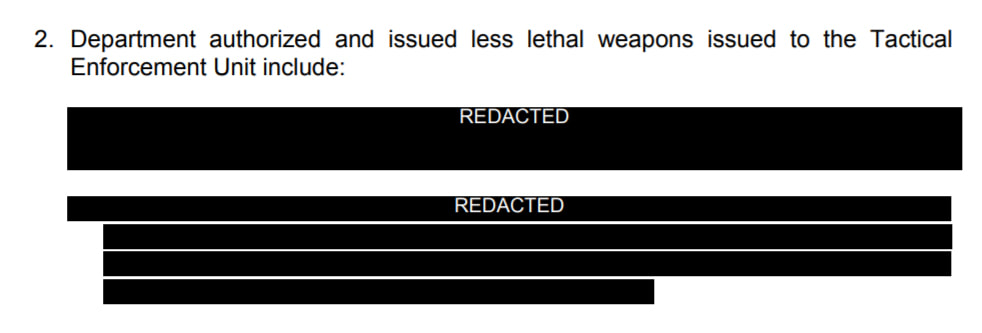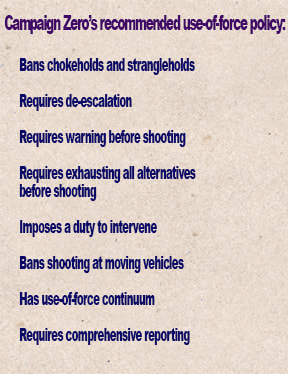 sBy Gretchen Schuldt The Milwaukee Police Department's use-of-force policy does not prohibit the chokeholds or the kind of restraint that Minneapolis police used when they killed George Floyd, records show. Milwaukee has adopted just three of eight restriction on use of force recommended by Campaign Zero, an effort to reduce killings by police, according to the campaign. Fire and Police Commission Executive Director Griselda Aldrete, responding to recent protests in Milwaukee, told the Common Council's Public Safety and Health Committee last week that the commission will review the policy. Milwaukee's use-of-force policy also keeps secret the some of the weapons that the Police Department can use against protesters and others. The policy does not disclose why the public should not know what can of weapons can be turned against it. The policy says the secret weapons are not lethal, but that cannot be verified without knowing what they are. Tear gas and rubber bullets also have been described as nonlethal, but they can kill or maim. Campaign Zero has identified eight restrictions associated with fewer killings by police. Of those, eight, Milwaukee has adopted three – establishing a continuum of force, requiring a warning before shooting, and imposing on officers a duty to intervene if they see an excessive use of force by a colleague. The campaign also says the city does not require that all other alternatives be exhausted before officers are authorized to shoot, but the Fire and Police Commission last year approved language that says that use of force that may result in serious injury or death "may only be used as a last resort." The other recommended restrictions the city has not adopted, according to the campaign, include:
While the city's policy does require reporting of many types of uses of force, it does not require reporting when an officer points a gun at someone without firing, according to the campaign. The campaign reported in 2016 that each of the eight recommended killings were associated with fewer police-involved killings. The policies linked to the largest drops in police-involved deaths were required comprehensive reporting (25% reduction), the requirment that officers to exhaust all other reasonable means before shooting (25% reduction), and that ban on chokeholds and strangleholds (22% reduction). "While each individual policy predicted lower rates of police-involved killings, the fewest killings per population were observed among police departments that had several of these policies in place," the study said. "For example, departments with four or more of restrictive use of force policies in place had 37% fewer police-involved killings per population than those that had 0 or 1 of these policies in place."
0 Comments
Your comment will be posted after it is approved.
Leave a Reply. |
Donate
Help WJI advocate for justice in Wisconsin
|
Copyright © 2024 Wisconsin Justice Initiative Inc.
The Wisconsin Justice Initiative Inc. does not endorse candidates for political office. The Wisconsin Justice Initiative Inc. is a 501(c)3 organization.
The Wisconsin Justice Initiative Inc. does not endorse candidates for political office. The Wisconsin Justice Initiative Inc. is a 501(c)3 organization.



 RSS Feed
RSS Feed